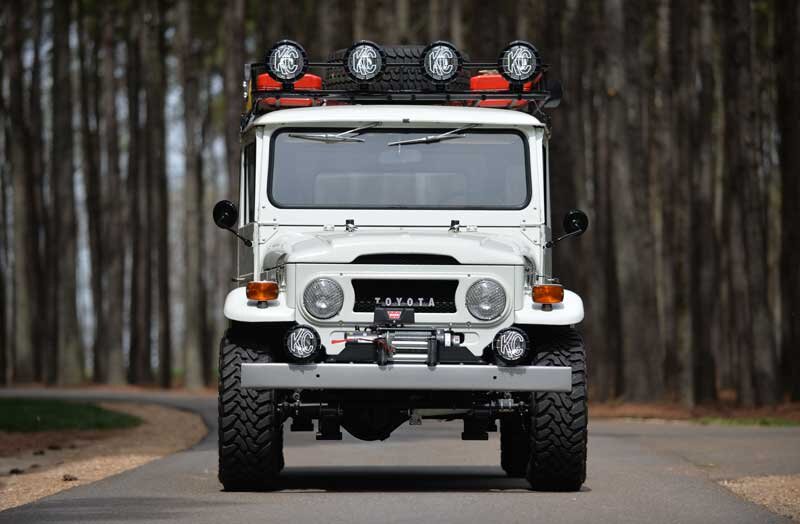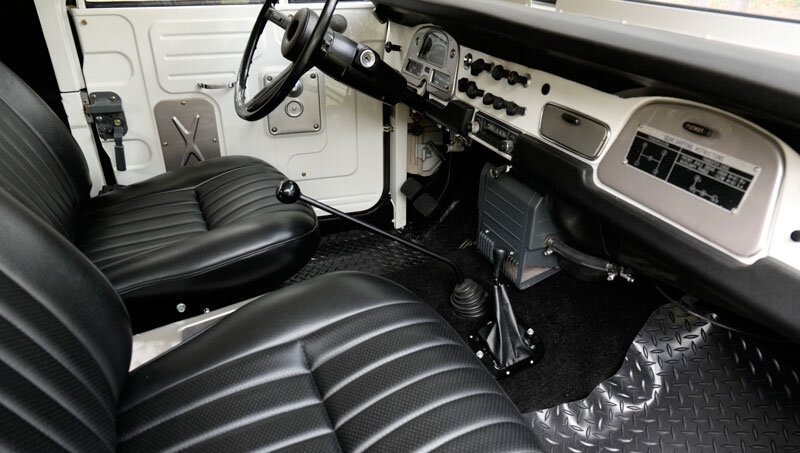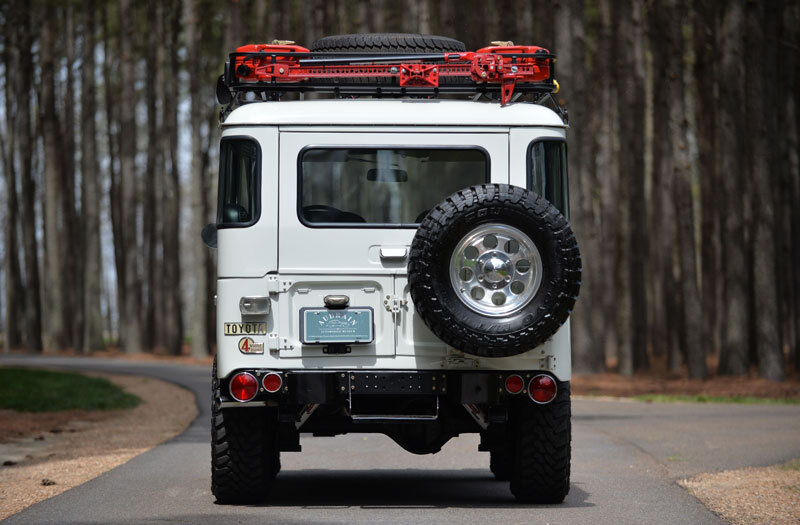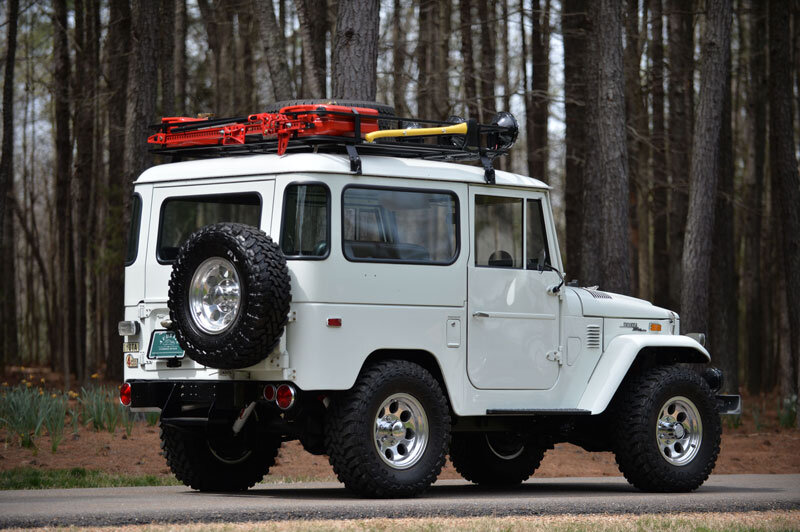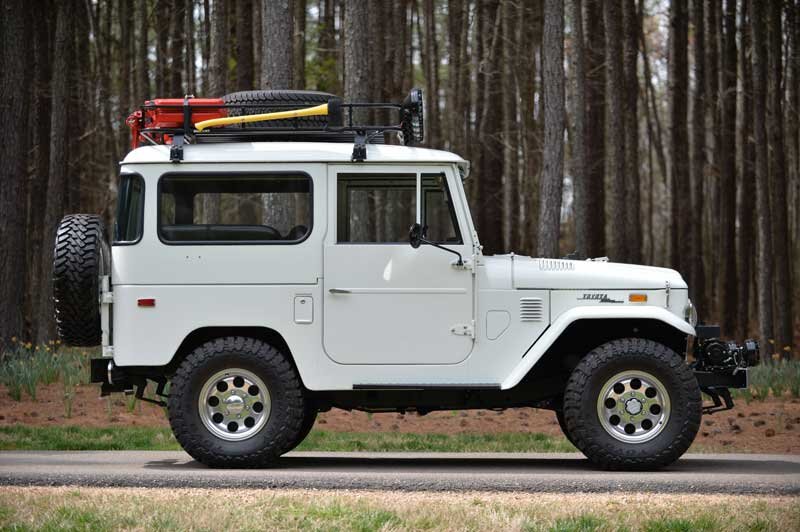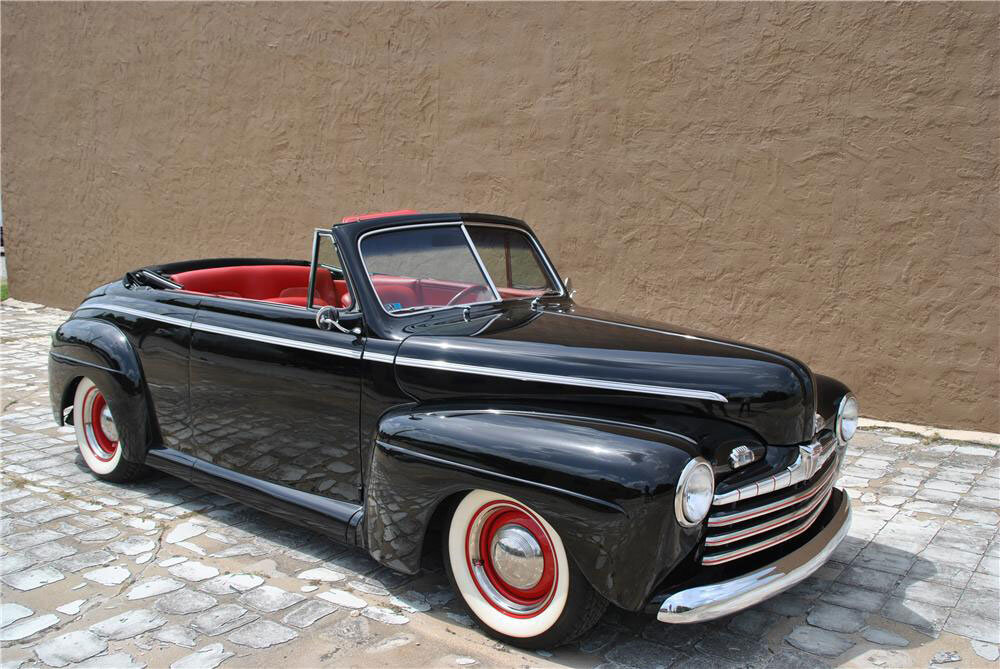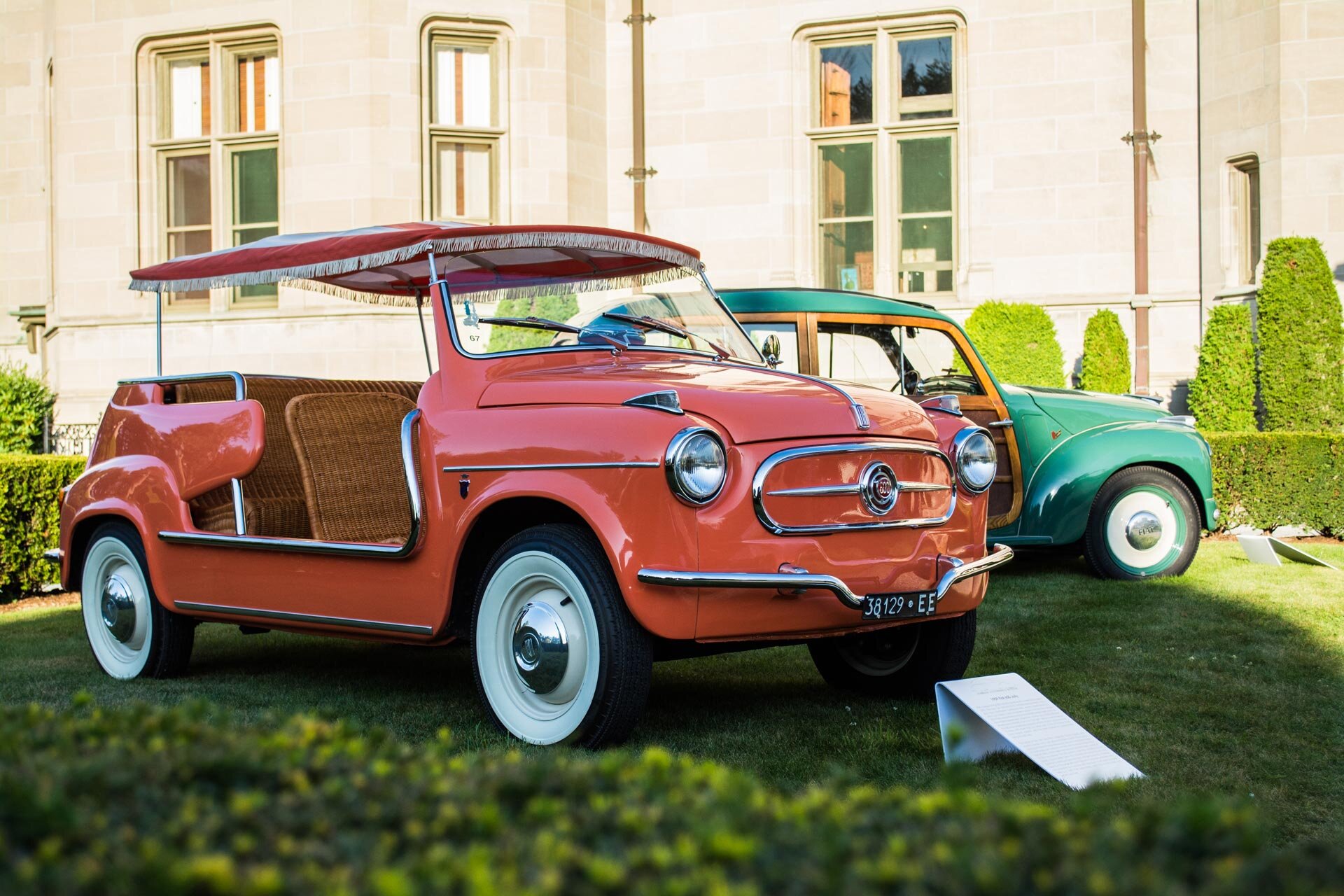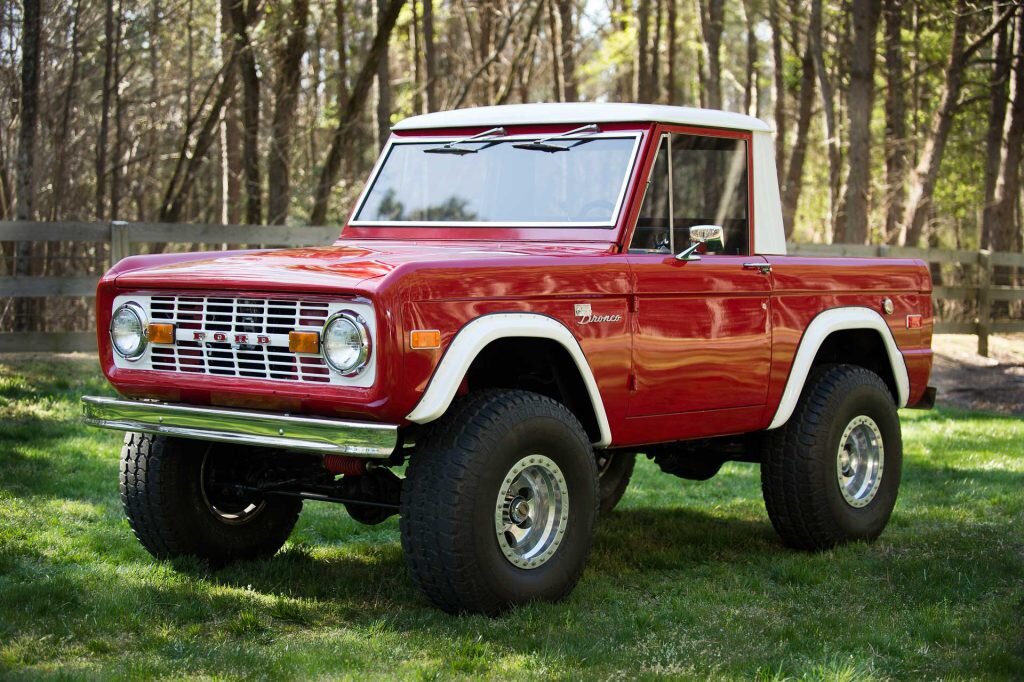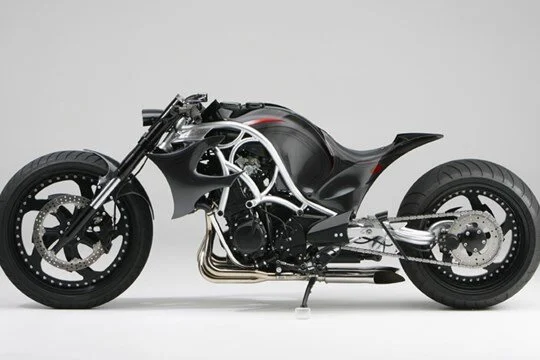1973 Toyota Land Cruiser
Specifications
Engine: Inline 6
Displacement: 3.9L
Horsepower: 125 hp @ 3,600RPM
Torque: 209 ft-lb @ 2,000RPM
Transmission: 3-speed manual
The Land Cruiser FJ40 may just be the definitive 20th century 4×4. With an international pedigree like a Land Rover, the rugged simplicity of a Jeep and swagger like an old Bronco, the FJ offers a greatest hits album of classic trucks. The FJ40 was in production from 1960 to 1984, and was Toyota’s best-selling model in the United States between 1961 and 1965. By 1973, 300,000 had been produced in either hardtop, soft top, station wagon or pickup form.
The F refers to the Type F engine, and the J stands for Jeep — not the brand Jeep but the more generic WWII-era use of that term as a “general purpose vehicle.” The 40 refers to the displacement of the inline-six engine. The “Land Cruiser” name was conceived in 1954 by former Toyota managing director Hanji Umehara: “I had to come up with a name for our car that would not sound less dignified than those of our competitors. That is why I decided to call it ‘Land Cruiser.’” — The Story of Land Cruiser
The FJ40 solidified Toyota’s reputation for building strong, reliable vehicles. It added a low range sub gear that improved acceleration and performance on rough roads, saw the 2-speed transfer lever moved to the instrument panel and 3-speed shift lever moved to the column, which made room for a third person to sit upfront. Folding jump seats in the rear were another key addition to the FJ40 as they allowed for more cargo or passengers to be carried.
The car on view carries its correct numbers matching 3.9 liter 6-cylinder engine with factory-correct 3-speed manual transmission and 4-wheel drive system. It underwent a complete frame-off restoration in October 2013.


